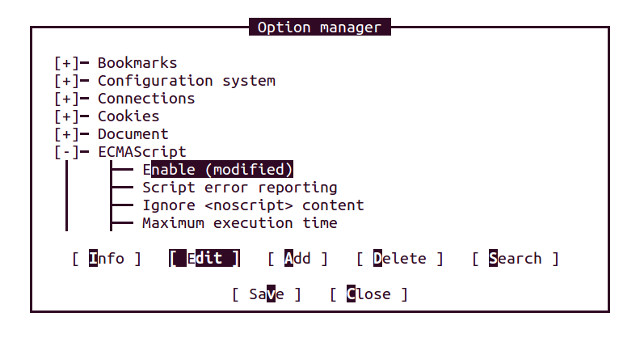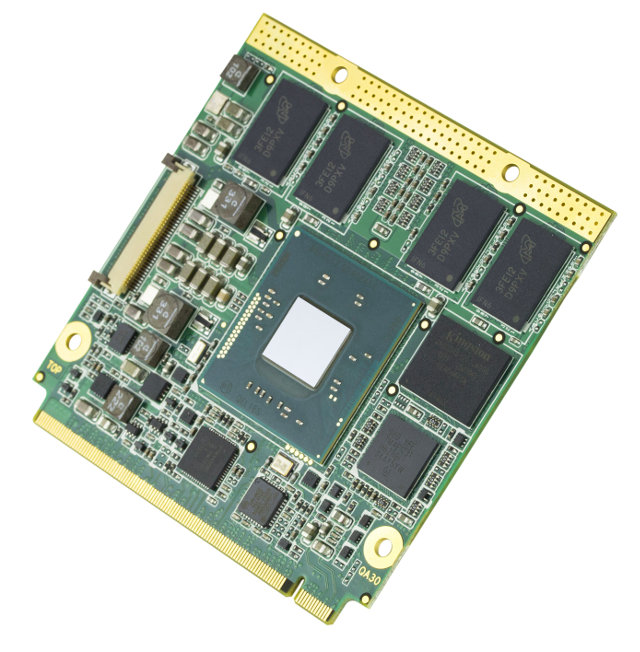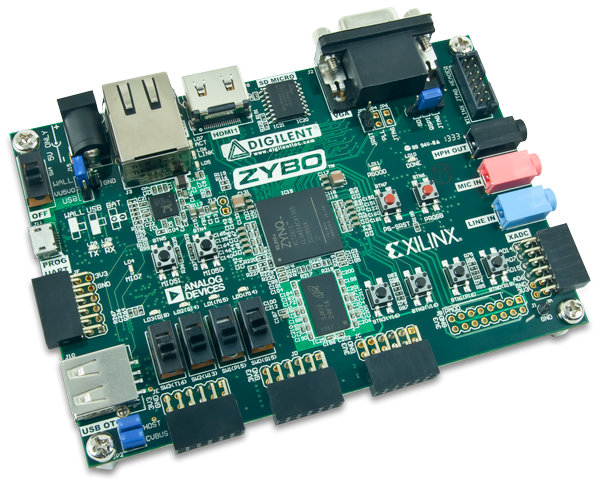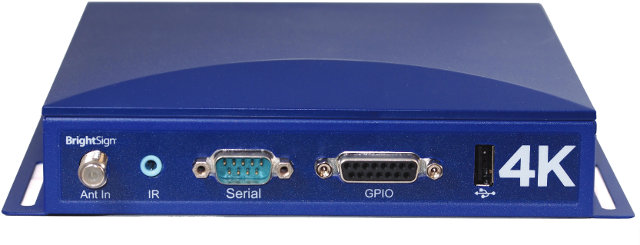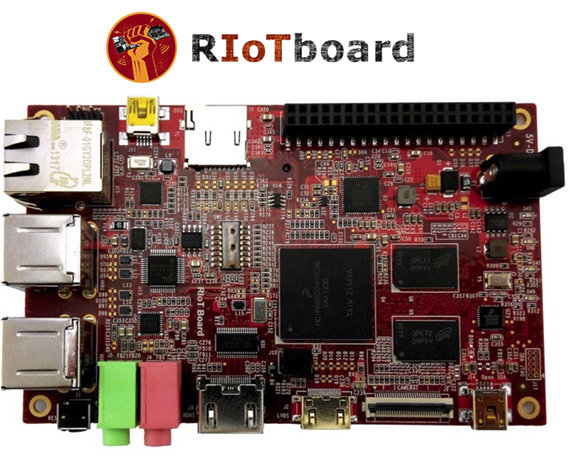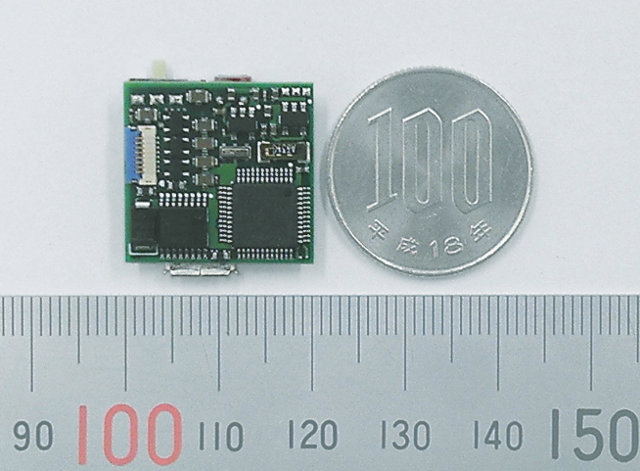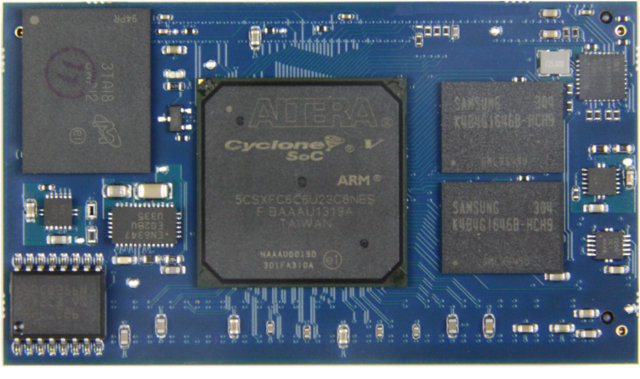Yesterday, I’ve spend some time trying to find a text-based web browser with support for JavaScript. Although I doubt many people would need that, I’ll post my findings, and show how to build and enable Javascript in eLinks web browser to access the web from a terminal in Linux (Ubuntu/Debian). Bear in mind that the implementation is far from complete, and most pages won’t work, at least for now. Initial research pointed me to three potential candidates: links2, w3m + w3m-js extension, and elinks. Links2 used to have JavaScript, but support was poor, so they decided to remove it. w3m-js is an experimental patch to add JavaScript to w3m, but the link is broken, so we are left with elinks. If you just want a text based web-browser, and do not care about JavaScript, you can just install links2, w3m, or elinks with apt-get. The versions I’ve tried in Ubuntu […]
Congatec Announces conga-QA3 QSeven and conga-TCA3 COM Express CoMs Powered By Intel “Bay Trail” Celeron and Atom SoCs
Congatec has announced several computers-on-module (CoM) powered by Intel “Bay Trail” Celeron and Atom SoCs compliant with either QSeven (conga-QA3 CoM), or COM Express (conga-TCA3 CoM) standards to be used for embedded applications. conga-QA3 and conga-TCA3 specifications: SoC (Processor + Intel HD graphics + Chipset) Intel Atom E3845 (4 x 1.91 GHz, 2MB L2 cache, 10 W) Intel Atom E3827 (2 x 1.75 GHz, 1MB L2 cache, 8 W) Intel Atom E3826 (2 x 1.46 GHz, 1MB L2 cache, 7 W) Intel Atom E3825 (2 x 1.33 GHz, 1MB L2 cache, 6 W) Intel Atom E3815 (1.46 GHz, 512kB L2 cache, 5 W) Intel Celeron N2920 (4 x 1.86 GHz, 2MB L2 cache, 7.5 W) Intel Celeron J1900 (4 x 2 GHz, 2MB L2 cache, 10 W) System Memory conga-QA3 – Up to 8 GB onboard DDR3L 1333 MT/s conga-TCA3 – 2x SO-DIMM sockets for DDR3L memory modules up to […]
ZYBO Development Board Features Xilinx Zynq-7010 FPGA + ARM SoC, VGA and HDMI Output
Digilent ZYBO (ZYnq BOard) is a low cost development board powered by Xilinq Zynq-7010 SoC featuring a dual core ARM Cortex A9 processor and FPGA fabric. It’s using the same SoC as MicroZed, is in the same price range as it costs $189 ($125 for academic purpose), but adds video interfaces, namely bi-directional HDMI and VGA, that are not available in MicroZed. It does come however with less RAM (512 MB vs 1GB). Digilent ZYBO specifications: SoC – Xilinx ZYNQ XC7Z010-1CLG400C dual core Cortex A9 processor + FPGA with 28K Logic Cells (~430K ASIC gates). System Memory – 512MB x32 DDR3 w/ 1050Mbps bandwidth Storage – 128Mb Serial Flash w/ QSPI interface, MicroSD slot for Linux file system, EEPROM programmed with 48-bit globally unique EUI-48/64™ compatible identifier. Video I/O – Dual-role (Source/Sink) HDMI port, 16-bits per pixel VGA output port Audio I/O – Audio codec with headphone out, microphone and […]
BrightSign 4K Digital Signage Player Delivers 4K 10-bit HEVC Video Playback at 60 fps via HDMI 2.0
When you buy a media player advertized as supporting 4K (aka 2160p, 4K2K, or UHD), you have to read the fine print to find out what you really get. First on the market were media players capable of decoding 4K videos put outputting to 1080p60 maximum such as Mele M9, then we’ve been shown some media players such as Geniatech ATV1800, decoding 4K video using 2160p resolution (3840×2160) as expected, but with a framerate limited to 24 fps or 30 fps due to limitation of HDMI 1.4. However, if you want to experience 4K video with the maximum framerate (60 fps) or “True 4K”, you’ll need a player and a TV support HDMI 2.0 standard. There are not many players currently supporting 4K @ 60fps, but BrightSign 4K digital signage media player is one of them, and it also happens to support HEVC/H.265 video codec. The company did not disclose […]
$74 RIoTBoard Development Board Features Freescale i.MX 6Solo
RIoTBoard, which stands for “Revolutionizing the Internet of Things Board”, is a new Android & GNU/Linux development board sold by Element14 /Newark powered by Freescale i.MX6Solo Cortex A9 processor. The board also features 1GB DDR3 RAM, 4GB eMMC and plenty of ports including Gb Ethernet, HDMI, and more. The board can be used to design netbooks , nettops, mobile internet devices (MIDs), PDAs, portable media players (PMP) with HD video capability, portable navigation devices (PNDs), industrial control and test and measurement (T&M), and single board computers (SBCs). RIoTBoard specifications: SoC – Freescale i.MX 6Solo ARM Cortex A9 MPCore Processor @ 1 GHz with Vivante GC880 and GC320 GPUs for 3D & 2D graphics, and HD video processing unit. System Memory – 1GB DDR3 RAM Storage – 4GB eMMC, microSD and SD card slots Video Output – HDMI, LVDS, and parallel RGB interfaces Audio I/O – Analog headphone/microphone, 3.5mm audio jack […]
U-BRAIN MicroSmart is a Tiny “15-Axis” Sensor Module with Bluetooth or Zigbee Connectivity
Usuda Research Institute & Systems Corporation has just announced U-BRAIN MicroSmart, a tiny and lightweight 3D modules module with a “15-axis” sensor, 5 GPIOS, as well as optional Zigbee and Bluetooth connectivity allowing up to 100 meter range. The module targets wearable devices used for fitness and health applications. U-BRAIN MicroSmart (UBN-MS8) Specifications: Processor – MCU + DSP Sensors – 6-axis position sensors, 3-axis posture sensor, 3-axis direction sensor, 1 temperature sensor, 1 audio sensor, and 1 light sensor. Connectivity – Optional? Bluetooth 2.1 + EDR or ZigBee with up to 100 meter range. GPIO – 5 GPIOS, TTL. Power Consumption – 10 mA max during use, 100 uA max in sleep mode Power – Via microUSB port Dimensions – 20 x 19 x 3.8 mm Weight – 2g to 5g depending on presence and selection of communication module The module will support Windows XP/Vista/7/9.0/8.1, Android 2.3 and greater, iOS, […]
Cute Embedded Nonsense Hacks, Nouveau Driver for Tegra K1, and Android Defaults to ART
There’s been some news at the end of this week that may not warrant a full article, but are still fun and/or interesting nonetheless: comments by the lead developer of Fedora ARM led to “Cute Embedded Nonsense” meme on Google+, preliminary commit for open source drivers for Tegra K1’s GPU, and Android Open Source Project defaults to ART instead of Dalvik. If you have a Google+ account, and circled a few people involved in ARM Linux, you must have seen a few postings about “Cute Embedded Nonsense Hacks” in your feed. It all started when Jon Masters posted about Red Hat’s ARM SBSA platform requirements, and in particular one comment that reads: I am all for people installing their own kernels if they want to. I support aggressively defined standard platforms (not cute embedded nonsense hacks) but not locked platforms. You can keep both parts when it breaks, of course. […]
DENX MCV Systems-on-Module Feature Altera Cyclone V SX FPGA + ARM SoC
DENX Computer has announced a new systems-on-module (SoM) powered by Altera Cyclone V dual ARM Cortex A9 + FPGA SoCs. DENX MCV SoMs also feature 1GB DDR3, 256 NAND Flash, and various memory interfaces and peripherals including PCI Express Gen2 and high-speed serial 3.125Gb transceivers. DENX MCV SoM specifications: SoC – Altera Cyclone V SoC with FPGA and two ARM Cortex A9 core @ 800 MHz. Four SoC are available: A2 – 5CSXFC2C6U23C7N – 25KLE, 36 DSP blocks, 6 transceivers 3.125Gbit/s A4 – 5CSXFC4C6U23C7N – 40KLE, 58 DSP blocks, 6 transceivers 3.125Gbit/s A5 – 5CSXFC5C6U23C7N – 85KLE, 87 DSP blocks, 6 transceivers 3.125Gbit/s A6 : 5CSXFC6C6U23C7N – 110KLE, 112 DSP blocks, 6 transceivers 3.125Gbit/s System memory – 1 GB DDR3 Storage – 256 MB NAND Flash, 256 Mbit Configuration Device HPS (Hard processor system) peripherals Clock distribution Default configuration: Gigabit Ethernet UART, SPI, I²C CAN USB Additional optional interfaces: One […]

